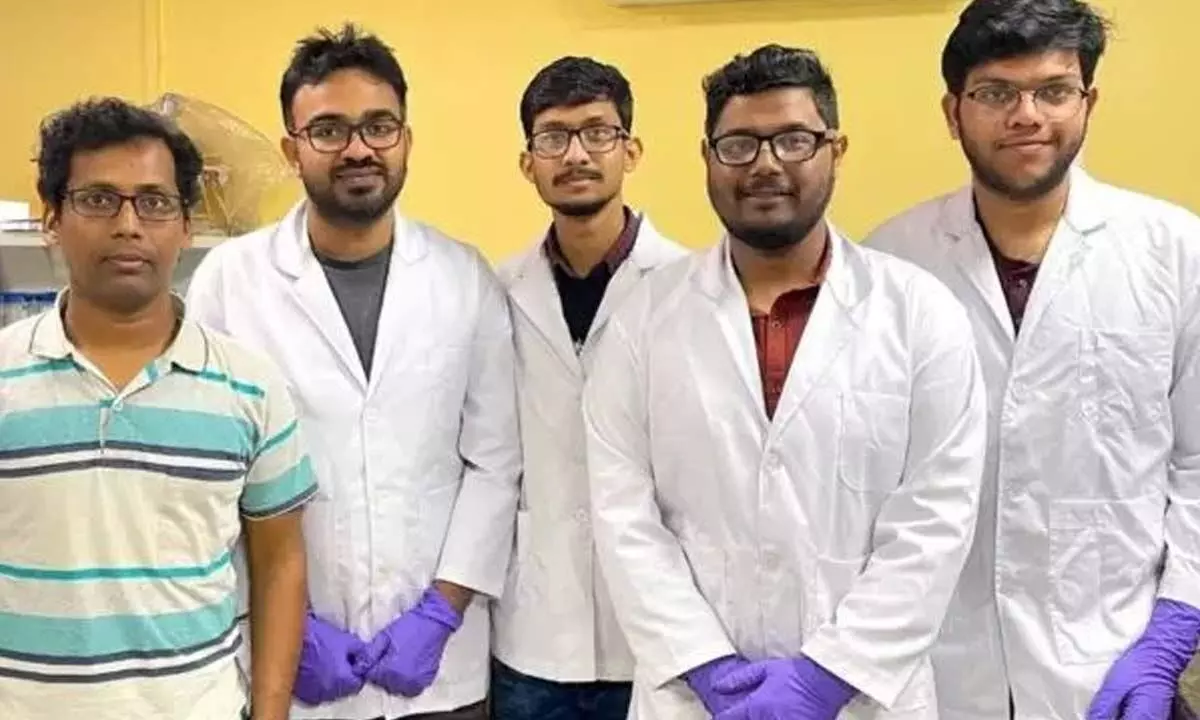Live
- 525 candidates remain in fray for 17 LS seats in Telangana
- Political Prowess on Display: Rajnath Singh and Smriti Irani's nominations galvanise BJP’s poll campaign
- TN government committee identifies 42 elephant corridors in state
- Ola Cabs CEO Hemant Bakshi steps down, firm announces job cuts
- IPL 2024: Kuldeep Yadav's 35 not out propels Delhi to 153/9 against Kolkata
- BJP leader Sambit Patra files nomination for Puri Lok Sabha seat
- Rajiv Pratap Rudy accuses Lalu Prasad of 'killing' developmental schemes in Saran
- Quick action by Telangana Cyber Security Bureau saves citizen's Rs 1 crore
- Types of food diabetics should avoid
- Celebrating National Honesty Day: 20 Quotes to Inspire Integrity
Just In
IIT Guwahati team develops liquid marbles for controlled medicine delivery


IIT Guwahati team develops liquid marbles for controlled medicine delivery
Researchers at the Indian Institute of Technology (IIT) Guwahati have developed liquid marbles using nano clay that can be pre-programmed for medicine delivery and cascade chemical reactions.
Researchers at the Indian Institute of Technology (IIT) Guwahati have developed liquid marbles using nano clay that can be pre-programmed for medicine delivery and cascade chemical reactions.
Nanoclays are nanoparticles of layered mineral silicates. Conventional treatment for disease involves tablets, capsules, syrups, ointments, among others.
A controlled drug delivery system, on the other hand, is a more efficient technique to deliver the required dose at the specific site gradually over the desired period of time. Loading and release of drugs in its soluble form is another important aspect -- which can be achieved with the liquid marble.
The team from IIT Guwahati engineered liquid marbles to have a 'time bomb' type release effect and to carry out a spontaneous chemical reaction.
"Release of drugs from a liquid marble in response to a stimulus for instance light, temperature, electricity has been reported earlier. But the time-programmed release was not yet achieved. We have chemically modified the lifetime of a floating liquid marble on a water pool," said Dr. Uttam Manna, Associate Professor, at the varsity's Department of Chemistry and Centre for Nanotechnology, in a statement.
Unlike normal droplets, a liquid marble is a non-sticking, non-wetting droplet. It is created by wrapping a droplet with fine hydrophobic particles i.e., water-repelling particles.
Liquid marbles can be rolled, squeezed, and even float without spilling when put in a water pool. In nature gall-forming aphids create liquid marbles by coating the honeydew they secrete in a powdery wax.
Liquid marbles are soft spherical solids that can be used for multiple applications by replacing the liquid inside them. Some examples are in the field of sensor platforms, soft robotics, healing agents, biosystems, etc.
Described in a paper, published in the journal Advanced Functional Materials, the nano clay marbles were made of a shell of nanoclay that holds the liquid.
To programme the marbles for timed release of the content, the researchers modified the nanoclay with chemical groups that were either water-loving (hydrophilic) or water-hating (hydrophobic). A water droplet was laid on a powder bed consisting of hydrophilic and hydrophobic nanoclay powders.
The properties and stability of the liquid marbles changed according to the relative amounts of the water-hating and water-loving groups on the nanoclay surface.
"The surface modifications on the nano clay changed the time taken for the liquid marble to break and release its contents when put in a pool of water. We were able to control the timing of the release of the content from seconds to hours by changing the nature of the surface groups. This is the time bomb type collapse of liquid marbles," Dr Manna said.

© 2024 Hyderabad Media House Limited/The Hans India. All rights reserved. Powered by hocalwire.com






